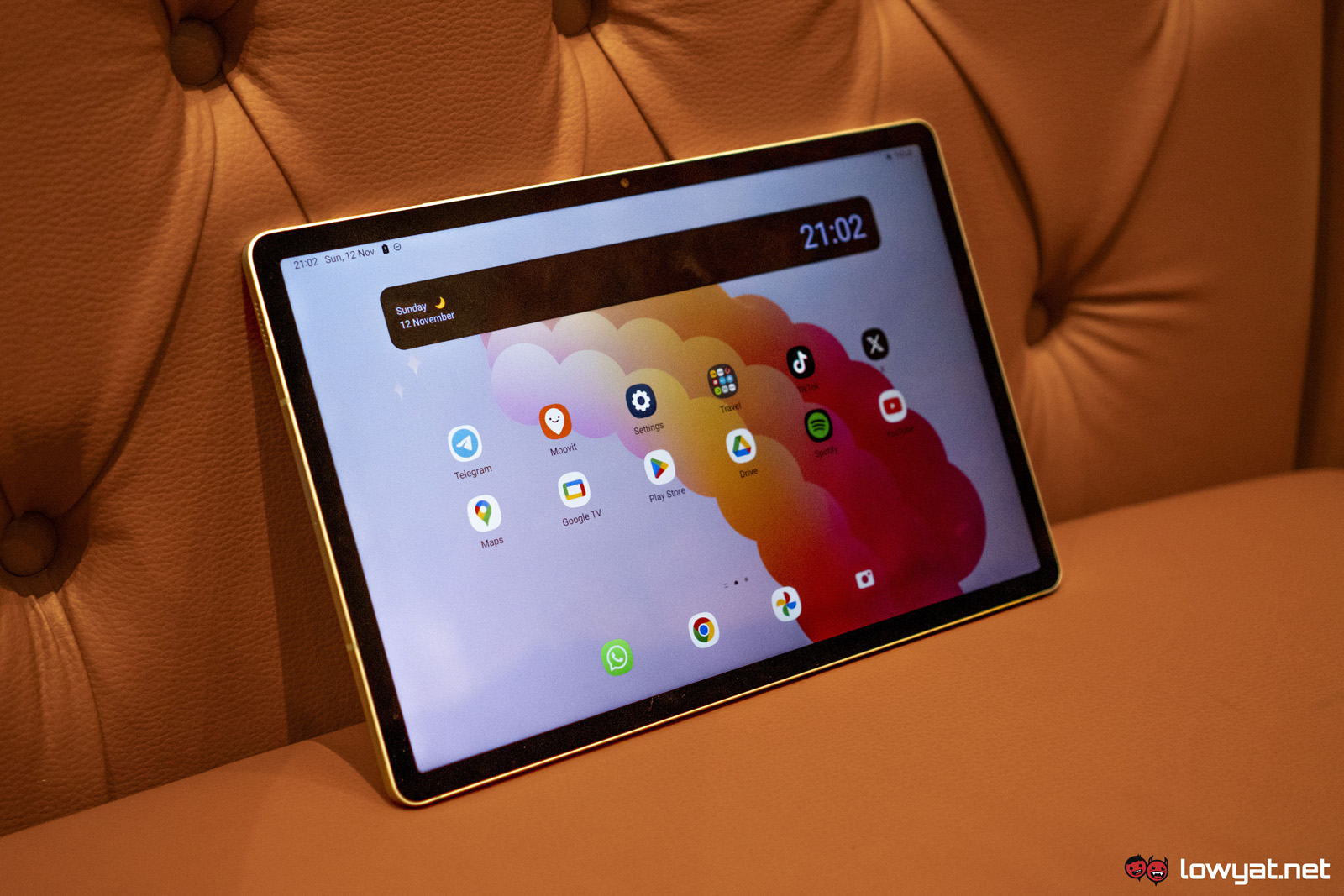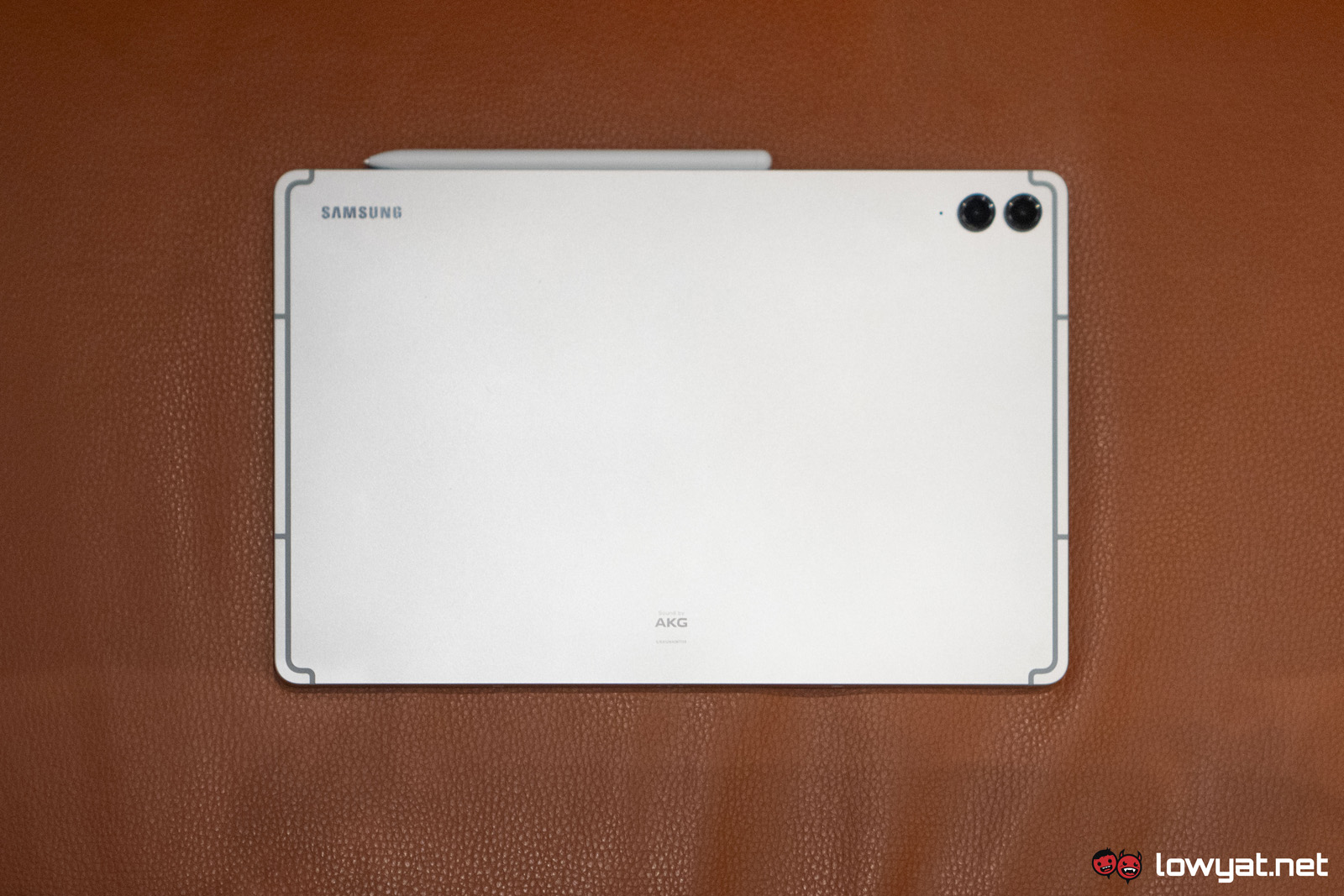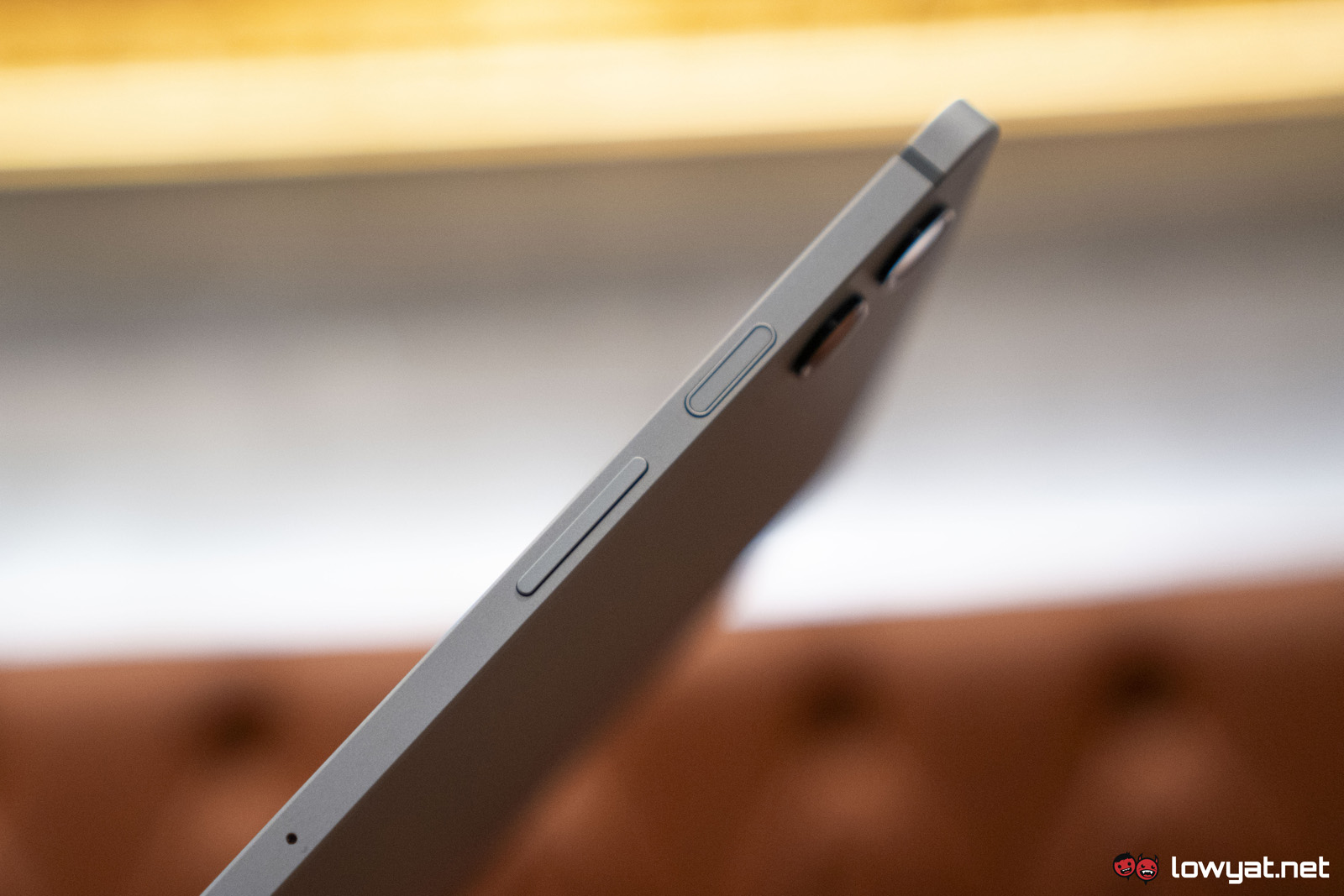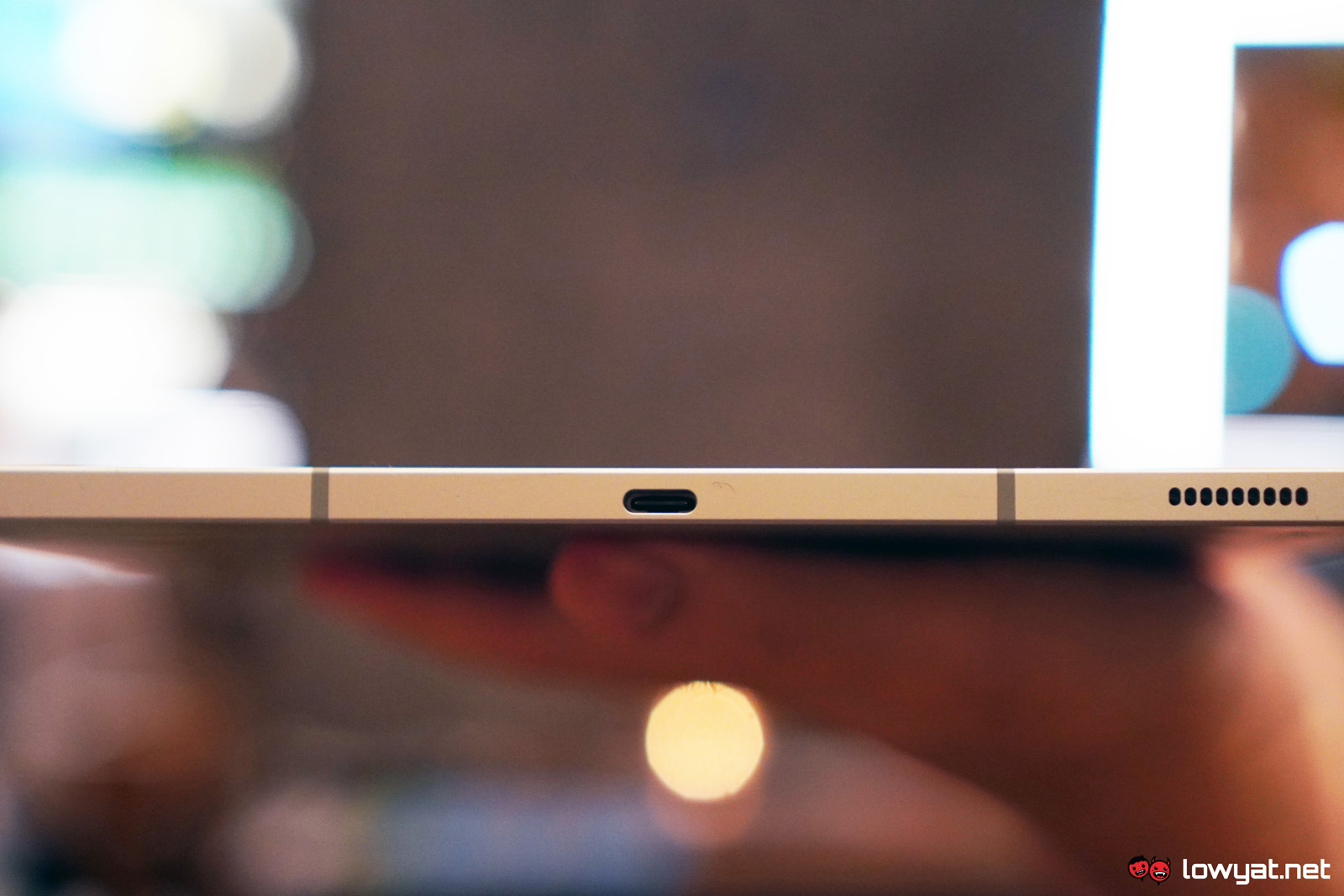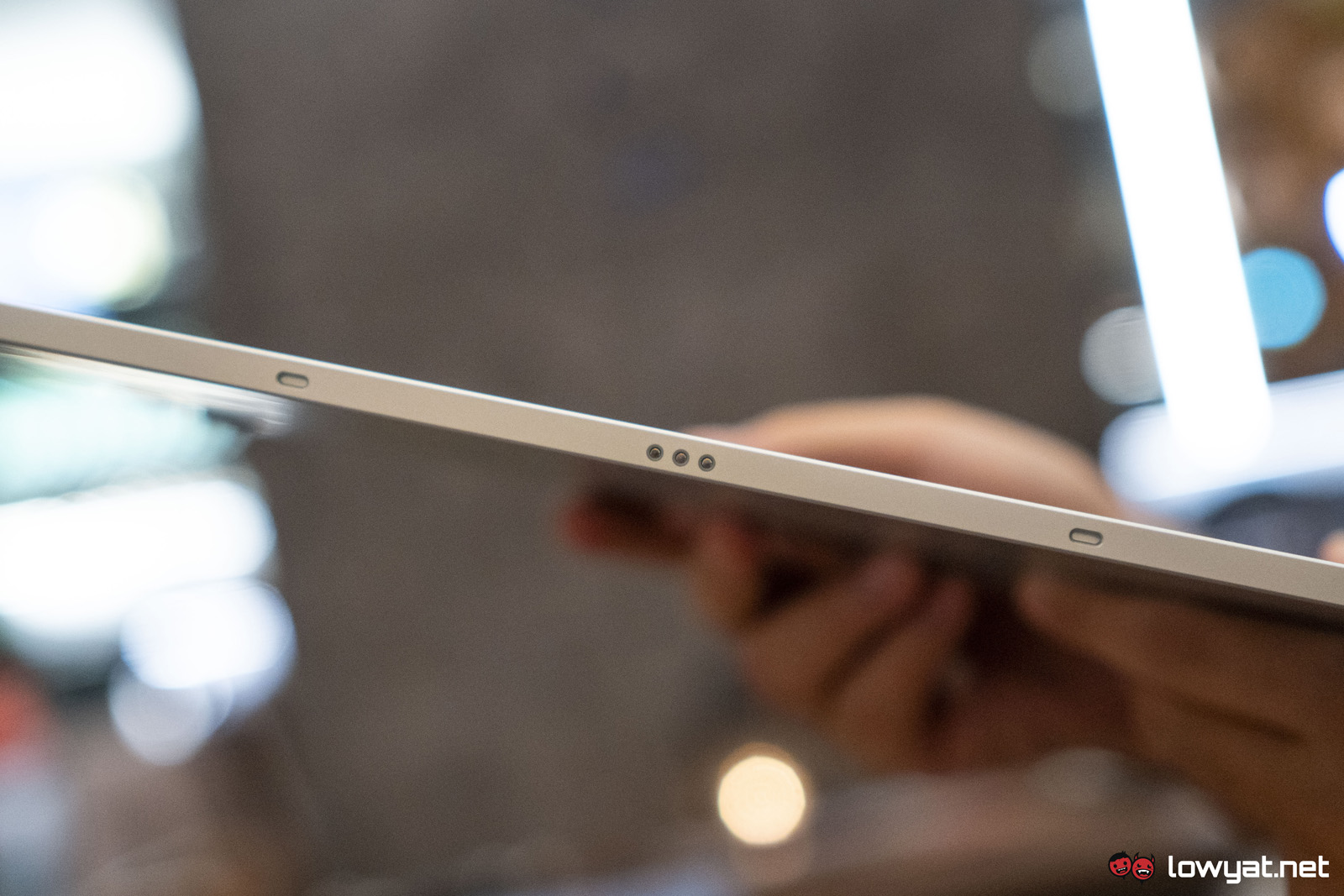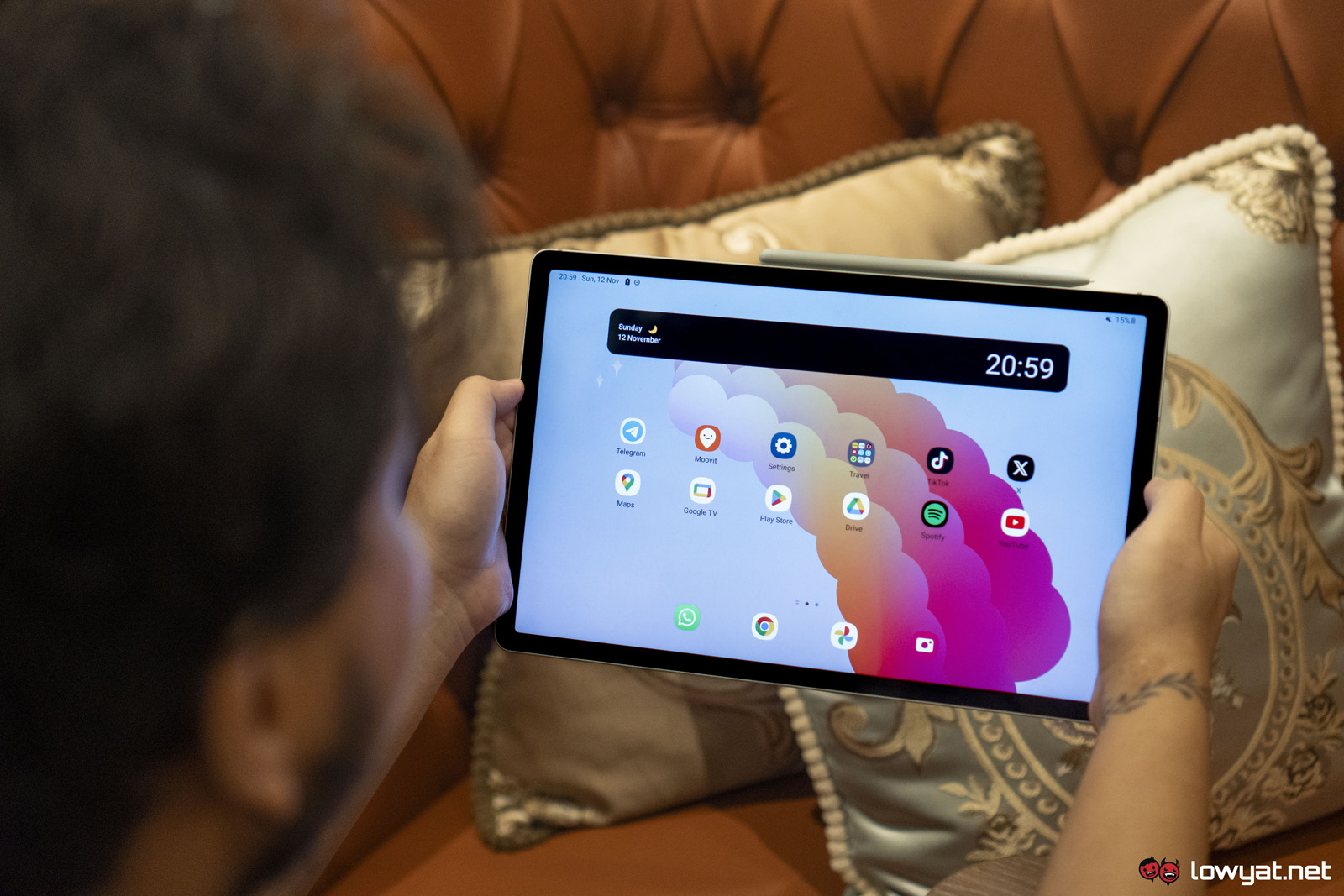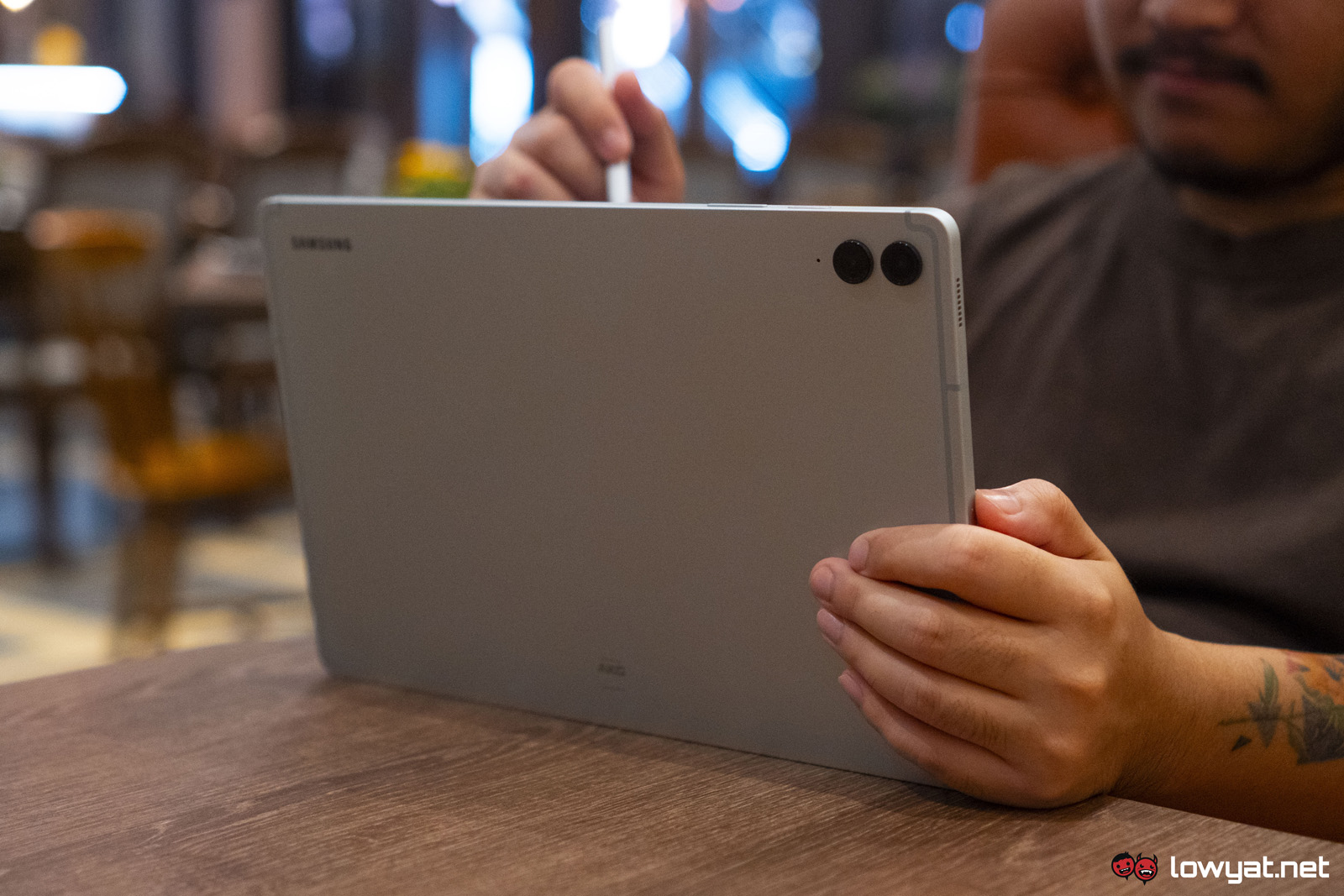Last month, Samsung introduced its new Galaxy Tab S9 FE lineup, which is a stripped down and relatively affordable alternative to its flagship Tab S9 series. To get the price down, the company had to cut some corners, but it did maintain the premium look of the original lineup and then some. The question is, are the sacrifices worth the smaller price tag?
What Am I Looking At?
The one I’ve been tinkering with over the past couple of weeks is the bigger Plus variant, which sports a 12.4-inch 2560×1600 LCD display with a refresh rate of only 90Hz. It runs on Samsung’s in-house Exynos 1380 chipset and can be configured with up to 12GB RAM and 256GB of storage with a microSD card for storage expansion. Connectivity-wise, the Galaxy Tab S9 FE supports Wi-Fi 6 and Bluetooth 5.3, as well as 5G if you get the cellular model.
On the camera side, it has two 8MP cameras on the back made up of one main lens and an ultra-wide lens while the front houses a 12MP front shooter within the horizontal bezel. Powering it is a massive 10,090mAh battery with support for 45W charging. For protection, the tablet comes with a dust and water resistance rating of IP68. It also ships out with a regular S Pen but you should know that it does work with the S Pen Pro, which is sold separately.
What’s Good About It?
The Galaxy Tab S9 FE Plus has a very premium-feeling build, with a solid metal chassis and flat edges for an industrial design. As for the display, its bezels are thicker than I would like but overall, it doesn’t have any noticeable impact on my daily usage. The display can get as bright as 720 nits, which isn’t the brightest but more than good enough for indoor usage.
As someone who only uses a tablet to watch YouTube videos and scroll on social media, this device can last quite a while. I can comfortably go a solid three days without charging it, which is impressive for something of this size. And speaking of watching content, the speakers of the Tab S9 FE are fantastic; it gets loud, not too bassy, and outputs clear vocals, which is great for watching shows on it.
Along with the high-quality speakers, the horizontally-placed selfie shooter makes video calling quite pleasant. Personally, I’m really glad this horizontal camera placement trend is catching on for tablets because I think I speak for everyone when I say that it’s the most natural orientation for this form-factor when making video calls.
The free included S Pen is remarkably fun and undoubtedly useful, coming with pressure and tilt sensitivity as well as a button to activate its function menu. There are, of course, embedded features that let you quickly take notes by just double tapping while holding down the action button, even with the screen turned off.
For convenience, you can magnetically attach the S Pen to the back and even on the left and right sides of the tablet (or the top and bottom sides, depending on how you look at it). It magnetically charges when you attach it to the back and it’s orientation-agnostic, meaning it doesn’t matter if the tip is faced towards or away from the cameras.
What’s The Catch?
It’s no surprise that there’s going to be a significant difference between the 120Hz AMOLED panel in the Tab S9 lineup and the 90Hz LCD display used for the Tab S9 FE series. 90Hz just doesn’t feel nearly as smooth, especially for a screen this big, and the lack of deep blacks means that cinematic shots in movies don’t look as good, which is important for a supposedly premium content-consuming machine like this one.
To get even more persnickety, the display feels a bit rough for some reason. I had some folks compare using this tablet with the touch display on phones and it was agreed that it’s just not as smooth. I found that to be the case personally as I kept gravitating towards using the S Pen over my fingers because it didn’t feel very comfortable.
On the note of comfort, there’s the issue of handleability. I’m not sure where the extra weight came from, but the Galaxy Tab S9 FE Plus is 46g heavier than its Tab S9 Plus counterpart, despite sporting the same-sized display and battery. This makes the tablet quite difficult to hold for long periods and it means that a stand is a necessary accessory. It doesn’t help that the magnets holding the pen aren’t very strong, with the pen easily detaching and falling off whenever I pick up the tablet.
I experienced several issues with the software, as most people using Android tablets will tell you. In Samsung’s case, there were several instances where the animation would stutter, which doesn’t actually impact the performance overall but it does make the tablet feel cheap at times. The company did roll out an update that seemed to fix this issue temporarily, but the bug eventually returned.
Another software problem I encountered was with the charging of the S Pen. Unlike certain tablets from other brands, the Tab S9 FE does not automatically show the battery status of the stylus when its attached to the back and while a battery indicator is supposed to pop up if I hold down the action button while it’s charging, I couldn’t get this function to work even after several attempts.
While I’ve given Samsung a lot of credit for the camera placement, the quality of those camera sensors is nothing to brag about. While the front snapper is relatively acceptable for video calling and the like, the rear shooters are just a noisy mess and the low quality is apparent when you’re looking through the cameras on a large display.
Should I Buy It?
The Samsung Galaxy Tab S9 FE Plus looks great and is definitely well-built, but the compromises the brand made to get it to this price point has made it difficult to recommend. While most people likely won’t care that much about the rear camera quality on a tablet, the flaws in its software are something that can’t be ignored. This could potentially be improved with future updates, but of course, you should only buy a product based on how it performs as it ships.
Additionally, the substandard display panel and infuriatingly weak magnets for the S Pen are a constant reminder that this device is Samsung’s economic offering of sorts. And with a starting price of RM2,799 for the Wi-Fi only model, it’s not exactly in the affordable category either. My two cents: you’re likely better off getting a more powerful tablet at a similar price point or coughing up a bit more for an iPad.
Follow us on Instagram, Facebook, Twitter or Telegram for more updates and breaking news.


